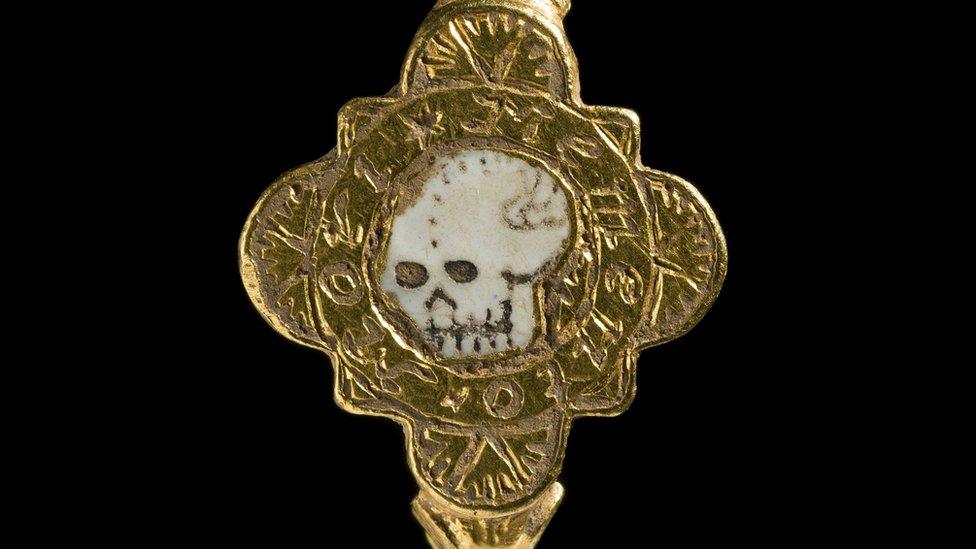Bronze Age and post-medieval treasure found in Wales
- Published
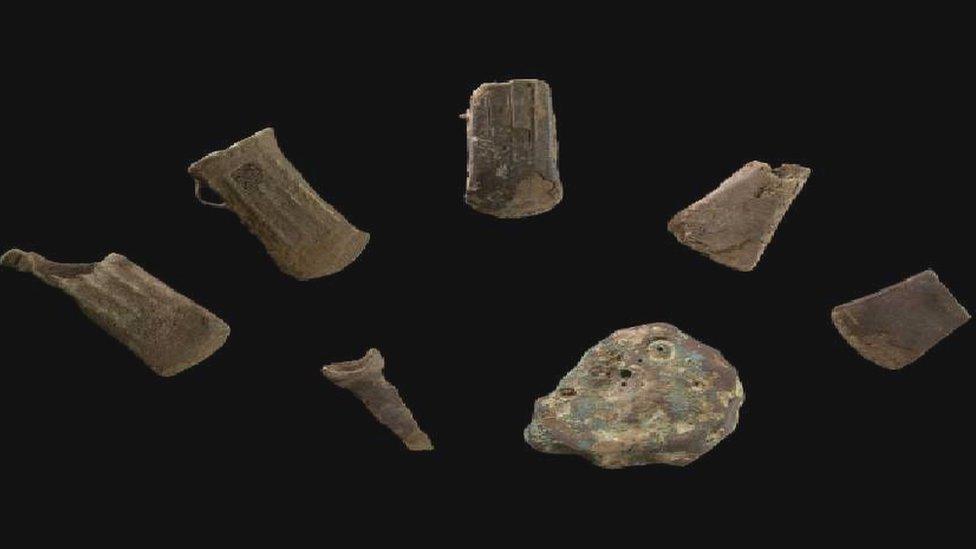
Pontypridd Museum hopes to acquire this Bronze Age hoard found in Rhondda Cynon Taf
Five treasure finds dating from the Bronze Age to post-medieval periods discovered by metal detectorists have officially been declared treasure.
They include items from a Bronze Age grave, and medieval and post-medieval personal objects and dress fittings.
Some of the finds are believed to date back more than 3,700 years.
The treasure was found in Rhondda Cynon Taf, Vale of Glamorgan and Powys, and national and local museums hope to acquire them.
A bronze socketed knife, three bronze socketed axes with ribbed decoration, a blade fragment, a palstave [axe] blade fragment and a copper ingot were found by Andrew Cooney when detecting on rough pastureland in Rhondda Cynon Taf.
These objects were buried in a bog almost 3,000 years ago and may have been intended by their owners as a gift to the gods who they believed lived there.
"The potential acquisition of this late Bronze Age material is a very exciting opportunity for Pontypridd Museum," said town councillor Lynda Davies.
"It would be the first time the museum has been able to acquire treasure and would also be the first addition of pre-1756 archaeological material from the area to our collection."
She said the items would help shine a light on a time in the area's past that had until now been under-represented in the collection or in research.
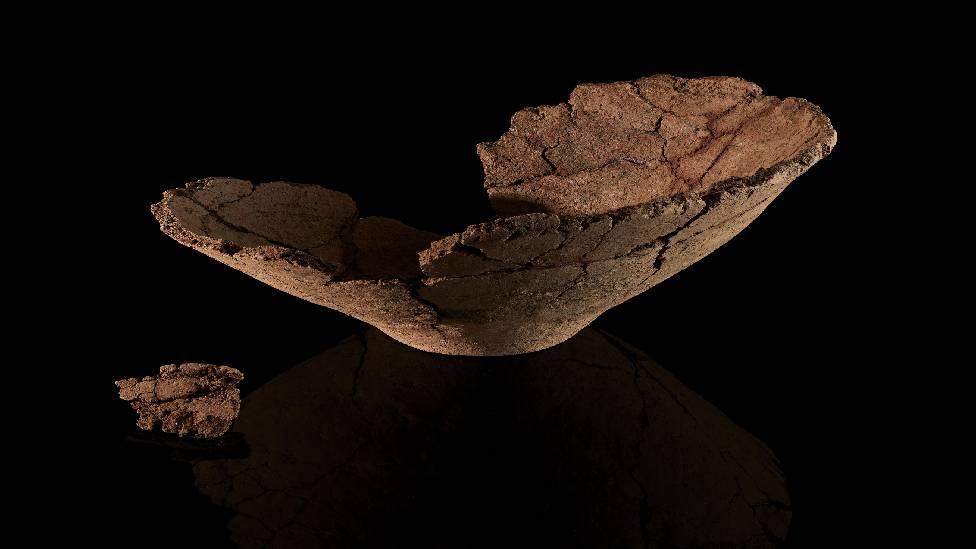
A Bronze Age ceramic urn was found in a field in Talybont-on-Usk
A second hoard found by Tom Haines in a field in Talybont-on-Usk, Powys, included a bronze knife, a bronze awl, a flint knife and ceramic urn used to contain a cremation burial.
Human bone fragments were also found and an archaeological investigation revealed a cremation burial placed in the urn, still buried in the ground.
The artefacts have been identified as of early Bronze Age, and the burial was of a man which has been radiocarbon dated to about 3,700 years ago. Brecon's y Gaer Museum hopes to acquire them.
Adam Gwilt, principal curator for prehistory at National Museum Wales, said: "Only through the responsible actions of the finder, in reporting the find and by leaving undisturbed objects in the ground for archaeologists to carefully uncover, has it been possible to reveal the full story linked with this burial."
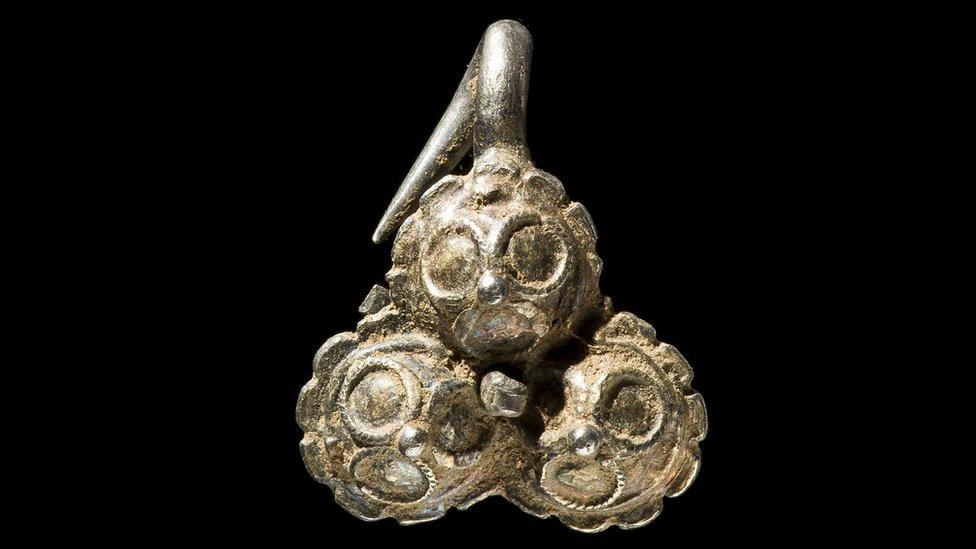
The Tudor silver gilt dresshooks have an ornate three petal design, with three decorated pellets, each with a hook soldered onto their back
The third and fourth treasure finds were a matching pair of Tudor silver gilt dress hooks, discovered in neighbouring fields by Jeff Nicholas and Brian Reynolds, during a metal detecting rally in Rhondda Cynon Taf.
The fifth find was a medieval silver annular brooch discovered by detectorist Keith Thomas in a field in Penllyn, Vale of Glamorgan.
The small circular brooch with decorated pin dates to the 13th or early 14th Century. National Museum Wales intends to acquire these three items.
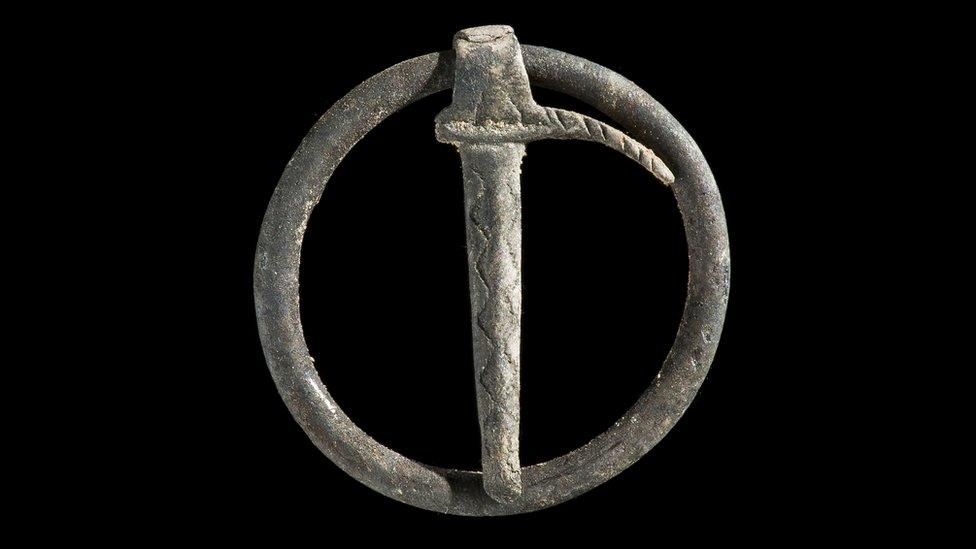
The brooch was used to secure items of clothing and similar examples been reported as treasure from across Wales in recent years
All five finds were declared treasure by Rachel Knight, assistant coroner for south Wales central.
- Published4 January 2022

- Published6 August 2021
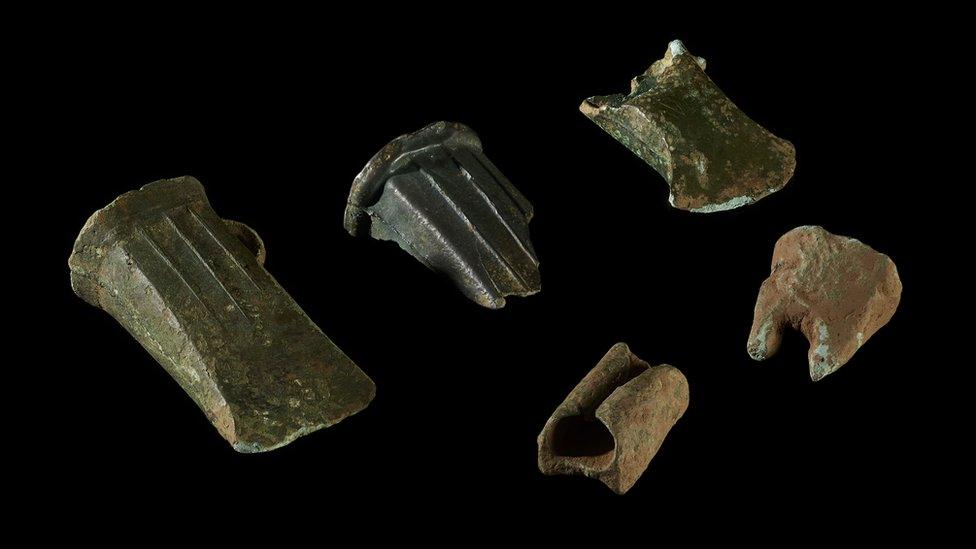
- Published29 March 2021
